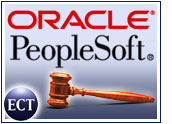
A few years ago, much content and many services could be had for free, even though the companies providing those services were not posting profits. But then the bills arrived, online advertising revenue dropped, and the free-content providers had to tighten their belts and look for other ways to make money.
To stay afloat, many of those companies have begun asking users to pay small fees for services that were once gratis. Although some companies have stumbled in this endeavor, analysts predict that charging for formerly free services is the wave of the future — if companies can handle the transition with aplomb.
Free No Longer
Free services used to be plentiful on the Internet, with many players, including Worldspy.com and Juno, offering no-cost Internet access and e-mail.
Internet users could obtain content even more easily from sites like Salon, which brimmed with high-quality articles. But hard times call for tough measures, and companies that depended on free-service or free-content models have had to adapt their approach.
As it turns out, charging customers for access to content or services seems not to be such a bad move after all. Giga Information Group research fellow Rob Enderle told the E-Commerce Times that although no company can be called a true success at collecting Internet fees, some firms have paved the way.
“AOL is based on this model,” he said. “However, with their financial performance of late, saying [the model is] working may be a stretch.”
Enderle pointed out that the fee-based model is working better than its free predecessor did, “but it is clear that the model still needs to mature so that the cost of acquiring and maintaining a customer is more in line with what that customer is willing to pay.”
Customer Service
Not surprisingly, the move toward charging for services that were once free is not altogether welcome in the user community.
“There is some grumbling,” IDC senior analyst Rob Rosenthal told the E-Commerce Times. “But the more it happens, the more customers are willing to go along with it.”
Some companies that made the switch have felt the heat of consumer ire. For example, Salon’s decision to make some of its content subscription-based caused a rash of heated debate over whether paid content could succeed.
Given the site’s financial situation — the company was rumored to be on the brink of financial disaster just last month — it seems too early to declare the paid-content experiment a success, but at least Salon appears to have blazed a trail for other online content purveyors to follow.
Giving and Getting
The trick to preventing consumer gripes, according to analysts, is to enhance service offerings when adding fees. Providing the same service while changing only the fee structure is the easiest way to anger customers. On the other hand, if customers believe they are getting newer and better services, they may open their wallets.
“If you offer something for the money, you’ll do better,” Rosenthal said. “If you just say, ‘Well, now it costs money and before it didn’t,’ then you might get some conversion rate from the most dedicated users, but how [many users convert] will be a crap shoot.”
Two examples of this model are MSN’s extra storage capabilities — which require users to pay more for additional storage space — and eBay’s price structure, which lets customers choose which services they want to use.
“A few bucks a month for items that people want, like storing pictures or having more e-mail space, is something users can see the value of,” Rosenthal said. “They feel like they’re getting something of worth.”
Future Fees?
Undoubtedly, analysts said, many companies will be watching Microsoft, AOL, Yahoo! and other service providers to see what works.
Enderle said he believes the next step for service fees will be online-only desktop applications that provide for-fee services like voice recognition and multimedia options. But for now, the growth rate of paid services remains an area that requires observation and invites speculation.
MSN, with its structure of both free and fee-based products, might offer the best indication of what users will see in the future. “Microsoft will likely be the best test of the transition process, but going from free to fee is never an easy path,” Enderle noted.
















































This is the Long and Short of it. This is no different than the Postal Department TRYING to charge a nickel for each email sent. Now, just what part exactly does the Postal Department have to do with the actual Internet?
The Internet was created for free thinking, free speech, etc. I know it was actually created by the Government, but what it is today is because of Hackers. Believe me, you start charging for the *FREE ACCESS* which the internet is supposed to supply, I can *Guarantee* that the Hackers WILL shut down the Internet within 24-48 hours. How do I know? Because I used to be one of them. I no longer care what makes things tick. I already know and therefore have lost interest. I assure you, though, when the freedom is taken from the Net…….. The Hackers WILL shut it down.
It doesn’t matter about your firewalls, SSL, Virii protections. Do you REALLY think that if one of those elite hackers wanted in, that you could stop them?
it is recognized that places like Napster and copyright violations have prompted a Pay-for-service. But for just anyone to do so would prompt a most nasty response. I would imagine it is being discussed as I type this.
I have read the rules and hope this is viewed merely as an opinion. I make no threats, nor AM capable of accomplishing them, but I know of those which I speak.
MT
Maybe a prepaid credit card like the prepaid phone cards could be used and maybe they could be recharged to be used again.
I also believe that the answer is not in charging to a credit card, this method will never be 100% secure, I think Sana’s idea is much safer, we need to find a way of avoiding overcharge, when we manage to do this the customers will pay for real quality content.
This really isn’t a new concept.
My company, Investors Hub, has had this model in place for about a year (free access with plenty of free features for everyone, but we make extra features available for a fee), and the model is working extremely well. So well that less than 3% of our income this year has been from advertising.
The trick, if you can call it a "trick," is to be very generous on the free side of things, so you’ll get people using the site, but hold back some really cool things for subscribers.
It’s important to make the extra features *worth it*! It looks to me like some companies are missing the boat on this, and apparently this article’s author is also picking up on that.
But it’s especially important to make this distinction: charging for things people are accustomed to having for free isn’t the way to do it. Offering more and better services for a fee is the way to go.
To use iHub for an example, it offers features few or no other message board sites offer, whether they’re in the stock-market area or not. How many sites let you click on an author and read all of his post? No, I don’t mean see links to all his posts. I mean get them all right on your screen in chronological order. How many of them are offering private messaging? Complete configurability of the user interface, down to the CSS level?
Businesses need to avoid falling into the trap of thinking "How can we get people to pay for what we offer?" and instead ask themselves "What can we offer that people will pay for?". So many of these sites are still not what they really can be, so the creative executive should easily be able to find new offerings he can provide for a fee.
If he can’t, there’s one avenue that simply doesn’t fail, and any internet company that is a "community" of sorts need only heed these simple words: "Listen to your users."
If a lot of users would like to view messages 10, 20, 50, or 100 at a time instead of clicking on them individually, well there ya go. Make it part of your Premium offering. And always include ad-free viewing in your Premium offering.
We (internet companies as a group) spent a long time offering everything for free and just getting eyeballs because advertisers would pay dearly for them. Next step will be for many of the surviving companies to take it too far in the other direction and start charging for basic access. The wave after that will be when the even fewer survivors figure out that basic should be free, and there should be offerings that are really worth paying money for. Those will be the long-term survivors.
Frankie’s right; the fee-based model won’t work until the Net’s business leaders resolve the public’s concerns about online credit card security. Most of the Dot-Coms failed because the public didn’t trust their online credit card security processes, not because they were grossly mismanaged. If this problem isn’t fixed soon, the Net won’t ever recover.
Having to pay doesn’t bother me as much as having to giving up my e-mail address. After I register, I get bombed by spam e-mail that takes me weeks to unsubscribe to.
Seems to me this article is missing the point. Of course people would rather get something for free rather than have to pay for it, all things being comparable. The problem is there’s no good structure for making micropayments online. Sorry, but credit cards aren’t the answer. No one wants to put 50 cents on their Visa repeatedly. Not to mention that there’s little faith AM ong the general population in secure transactions. That’s the root of the issue: create a reliable micropayment system that people trust not to get hacked or cross-marketed to death, and online commerce will bloom.